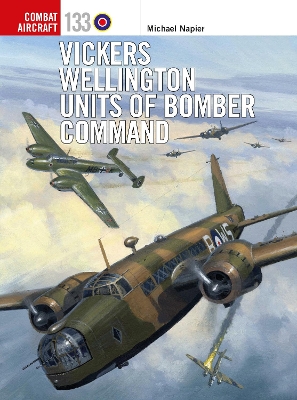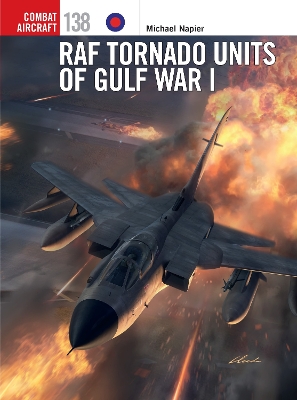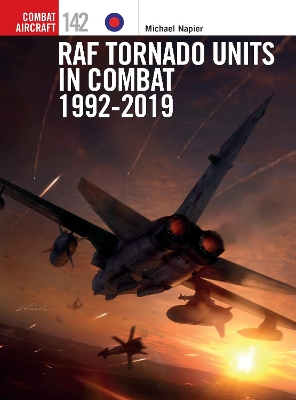Combat Aircraft
3 total works
The Vickers Wellington was one of very few aircraft types to have been in production and frontline service throughout World War II, and more than 10,000 Wellingtons were built in the period. They took part in the first RAF bombing mission of the conflict when, on 4 September 1939, 14 examples from Nos 9 and 149 Sqns undertook a daring daylight attack on the Kiel Canal. However, after suffering high losses on follow-up raids, Wellingtons were withdrawn from daytime missions and began to operate at night from May 1940. They subsequently took part in raids against the Italian port city of Genoa in July 1940, and against Berlin the following month, followed by key missions in the 'Battle of the Barges' in September and October, as the RAF targeted the Germany's invasion fleet being assembled in French Channel ports. When RAF's strike force expanded the next year following the introduction of the improved Wellington II, the 21 squadrons equipped with the Vickers aircraft, which included Polish-, Canadian- and Australian-manned units, formed the backbone of the Bomber Command night bombing force. Over the next two years Wellingtons participated in all the major operations by Bomber Command, including the daylight raid against German battleships in Brest harbour in July 1942 and the first three 'Thousand Bomber' raids in the summer of 1942.
This illustrated study explores the design, development, and deployment of the Vickers-Wellington type, charting its role in World War II from its earliest missions to its use in training after its withdrawal from frontline bomber missions in 1943. The text is supported by stunning full-colour artwork.
This illustrated study explores the design, development, and deployment of the Vickers-Wellington type, charting its role in World War II from its earliest missions to its use in training after its withdrawal from frontline bomber missions in 1943. The text is supported by stunning full-colour artwork.
When the Gulf Crisis of 1990 was triggered by the Iraqi invasion of Kuwait, the RAF responded by sending Tornado F 3 fighters to Saudi Arabia to help defend the country against further aggression. These aircraft were followed by the deployment of Tornado GR 1 strike/attack aircraft to Bahrain. Eventually three wings of Tornado GR 1s were established in Bahrain, Tabuk and Dhahran, as well as a detachment of Tornado GR 1A reconnaissance aircraft. At the start of hostilities in January 1991, the Tornado GR 1 wings carried out night-low-level attacks against Iraqi Main Operating Bases using the JP233 runway denial weapon. Meanwhile, Combat Air Patrols from the Tornado F 3 wing ensured the integrity of Saudi airspace.
Once air supremacy had been established, the Tornado GR 1 force moved to medium-level operations, initially by night and later by day, to attack the Iraqi oil production and storage infrastructure. The arrival in theatre of a laser designation capability with Pave Spike/Buccaneer and TIALD/Tornado enabled precision attacks against the Iraq transport system to cut off the frontline troops from resupply and reinforcement and then to carry out a systematic destruction of the airfield facilities. Tornado GR 1A reconnaissance operations played a major role in the location of Scud missile launchers and in the planning and execution of the land offensive. Throughout the conflict, the Tornado F 3 wing at Dhahran carried out defensive counter-air operations to ensure the safety of the base areas. This volume, publishing 30 years after the conflict to free Kuwait, provides detailed first-hand accounts of the missions undertaken by the Tornado crews. It is illustrated by photographs taken by aircrew involved in the operation and includes 30 newly commissioned profile artworks and detailed nose art views of the aircraft ranged against Iraq.
Once air supremacy had been established, the Tornado GR 1 force moved to medium-level operations, initially by night and later by day, to attack the Iraqi oil production and storage infrastructure. The arrival in theatre of a laser designation capability with Pave Spike/Buccaneer and TIALD/Tornado enabled precision attacks against the Iraq transport system to cut off the frontline troops from resupply and reinforcement and then to carry out a systematic destruction of the airfield facilities. Tornado GR 1A reconnaissance operations played a major role in the location of Scud missile launchers and in the planning and execution of the land offensive. Throughout the conflict, the Tornado F 3 wing at Dhahran carried out defensive counter-air operations to ensure the safety of the base areas. This volume, publishing 30 years after the conflict to free Kuwait, provides detailed first-hand accounts of the missions undertaken by the Tornado crews. It is illustrated by photographs taken by aircrew involved in the operation and includes 30 newly commissioned profile artworks and detailed nose art views of the aircraft ranged against Iraq.
After the Gulf War of 1990, No Fly Zones (NFZ) were established over northern and southern Iraq and the Tornado GR 1 force stepped up to operations over the southern NFZ.
The Tornado GR 4 took responsibility for RAF combat air operations in Afghanistan from the Harrier force in 2009, and in 2011 was involved in missions against the Gaddafi regime in Libya. The unique multirole capabilities of the aircraft enabled it to support ground operations with the Raptor reconnaissance pod, Brimstone missiles and Paveway IV laser-guided bombs until withdrawal in 2014. The Tornado GR 4 was also used for operations over Iraq and Syria against the ISIL terrorist organisation. Intensive air operations were flown between 2014 and 2019, when the Tornado GR 4 was finally withdrawn from RAF Service.
This volume, written by former RAF pilot Michael Napier, provides detailed first-hand accounts of the missions undertaken by the Tornado crews during the most recent conflicts over the Middle East and the Balkans.
The Tornado GR 4 took responsibility for RAF combat air operations in Afghanistan from the Harrier force in 2009, and in 2011 was involved in missions against the Gaddafi regime in Libya. The unique multirole capabilities of the aircraft enabled it to support ground operations with the Raptor reconnaissance pod, Brimstone missiles and Paveway IV laser-guided bombs until withdrawal in 2014. The Tornado GR 4 was also used for operations over Iraq and Syria against the ISIL terrorist organisation. Intensive air operations were flown between 2014 and 2019, when the Tornado GR 4 was finally withdrawn from RAF Service.
This volume, written by former RAF pilot Michael Napier, provides detailed first-hand accounts of the missions undertaken by the Tornado crews during the most recent conflicts over the Middle East and the Balkans.


